--SRC Index
--Related high-x stuff
--Related high-x stuff, part deux
In the three plots below, I show the difference between using the tradition bin-centering (our model to bin-center in x and theta), and just using a flat cross section at the central x of the bin. The differences are quite slight, as the bins are small enough that the central x almost coincides with the average x. And for helium-4, we see no difference for x<3, which is expected.
Shown are raw cross sections with both methods of bin-centering, as well as the rebinned cross sections for both cases (which are used for ratios).
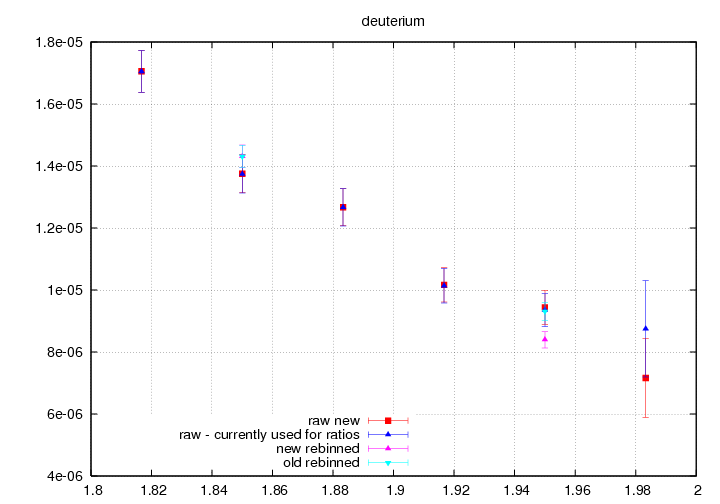
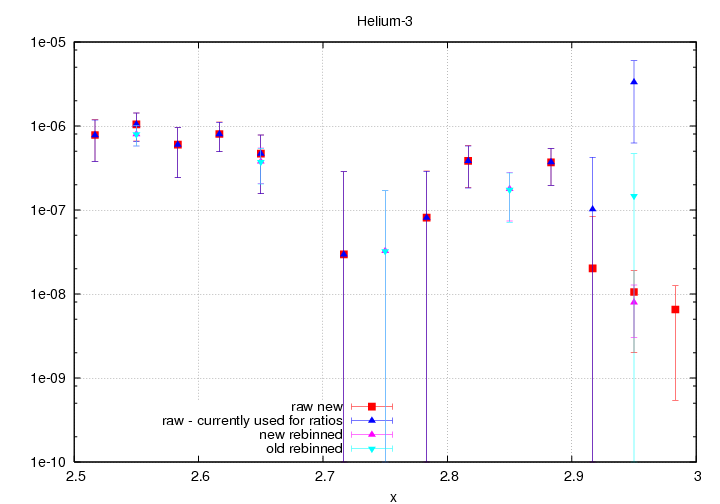
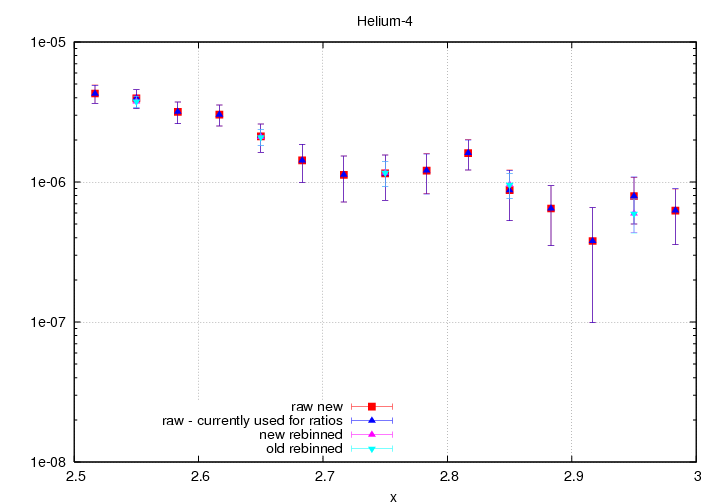
Impact on ratios
As expected, the differences are only for the last couple of points. The 4/3 ratio is show on a log plot for clarity.
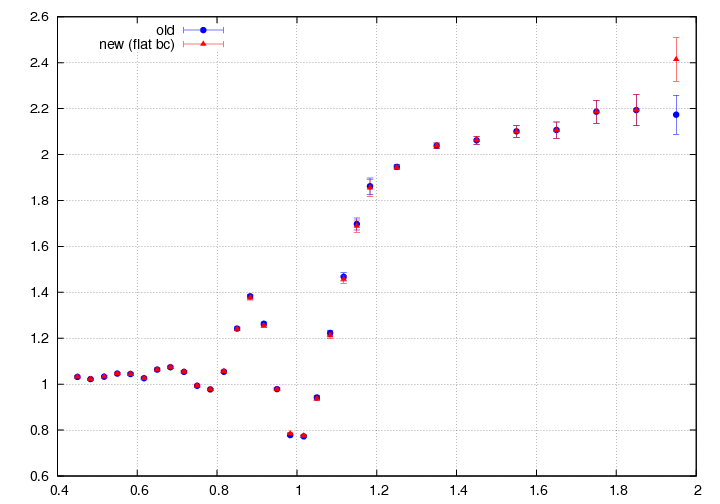
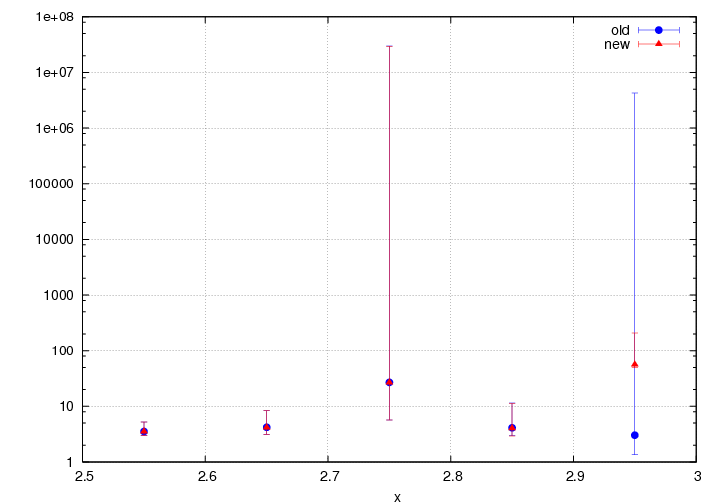
Things of possible interest
Coulomb Corrections The last 3He point (x=2.983) had a negative coulomb correction. Coulomb corrections are interpolated from a big table generated 2 years ago using our cross section model. The binning is such that to obtain the coulomb correction for the last data point, the interpolation has to be done between 2 points where the high one ends up at x>3, and the coulomb correction is undefined there (and the table lists -10 as the default). I didn't notice this before, since with the traditional bin-centering, Y_MC=0, and the point was undefined. With flat bin-centering, the problem became obvious, and to get the coulomb correction factor, I just extrapolate a straight line between the last two non-zero values in the table, giving me a non-zero correction for x=2.983. It's quite a reasonable value. Here is a list for coulomb correction factors for x>2.5, for reference:
0.26500E+01 0.10115E+01
0.26833E+01 0.10122E+01
0.27167E+01 0.10130E+01
0.27500E+01 0.10141E+01
0.27833E+01 0.10153E+01
0.28167E+01 0.10170E+01
0.28500E+01 0.10196E+01
0.28833E+01 0.10230E+01
0.29167E+01 0.10378E+01
0.29500E+01 0.10557E+01
0.29833E+01 0.10737E+01
Energy loss There could also be a problem if our energy loss is small enough that the resolution becomes a problem. However, even at x~3, the energy loss is 0.5GeV, so we're probably safe.




